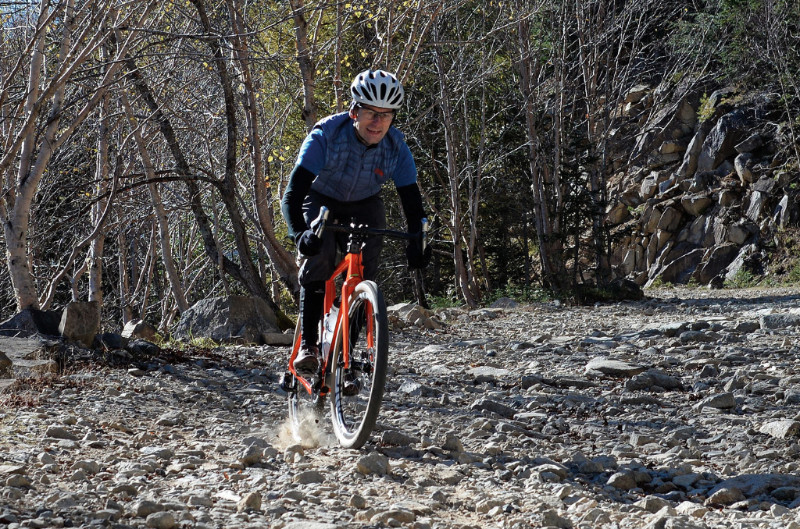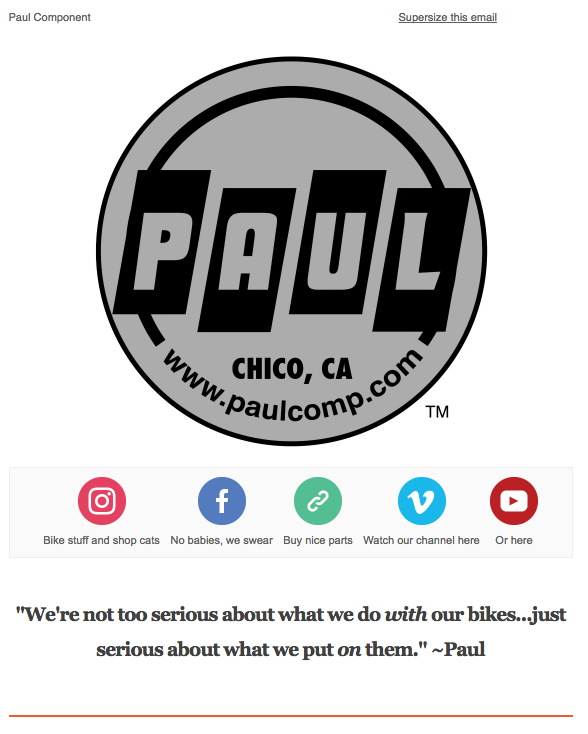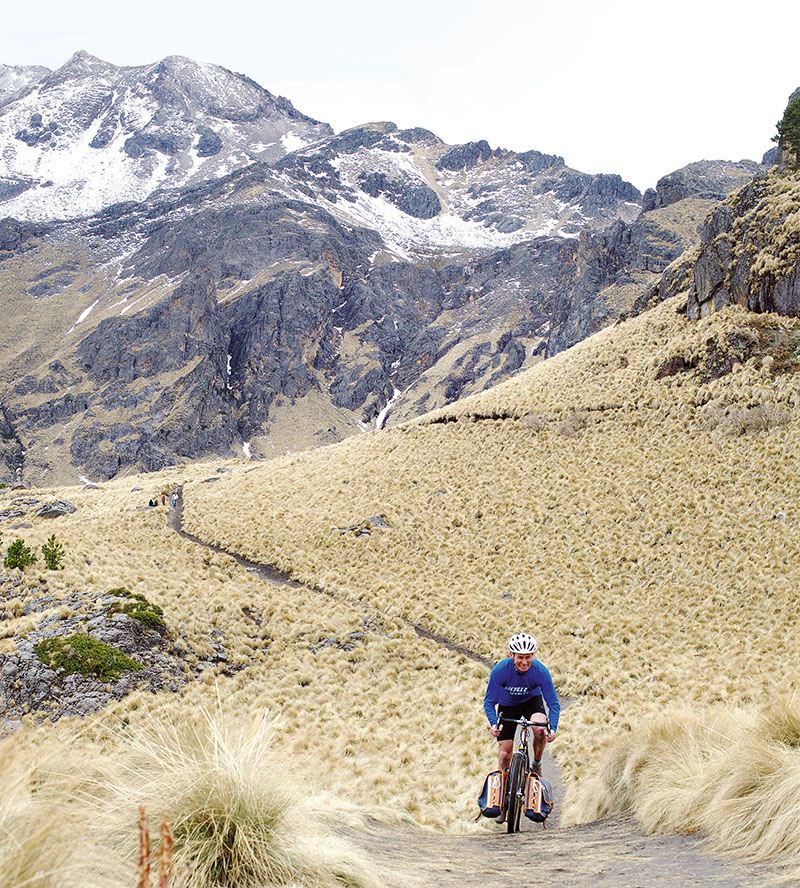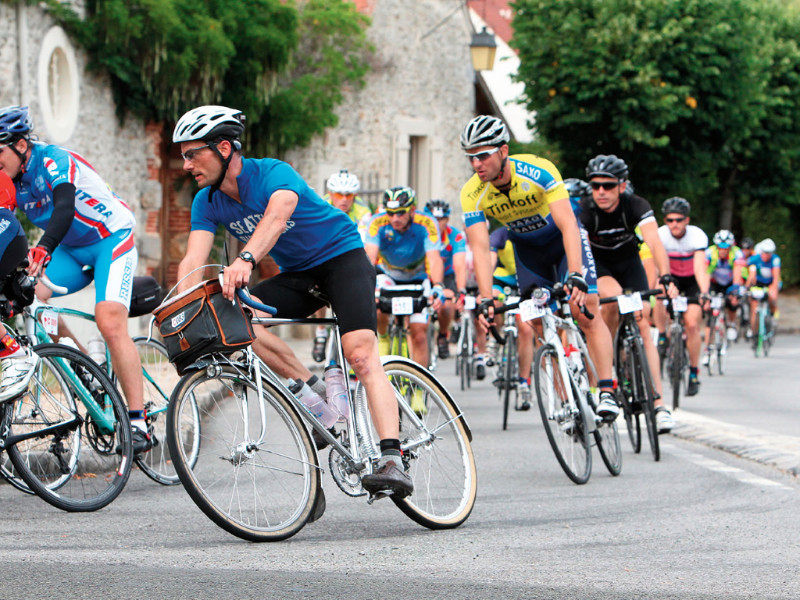Paul Components Interview
7 Questions with Jan Heine, of Bicycle Quarterly


We always enjoy to learn how others see Compass Cycles and Bicycle Quarterly. Paul Component Engineering has been making CNC-machined bike components in Chico, California for over 25 years. Like Compass, Paul focuses on quality, craftsmanship and making parts that last a lifetime.
Paul’s monthly email newsletters show how their components are made, provide stories of rides and events, and interview leaders in the bike industry. Past interviews have included Steve Rex, Curt Inglis, Mark Norstad (Paragon Machine Works), Ira Ryan and others. When Paul Components asked to interview me, I was delighted to say yes. Some of the questions were quite unexpected. Here is the interview as it appeared in the Paul Components newsletter. Enjoy!
Paul has been a fan of Jan’s for a long time, especially after discovering a shared interest in vintage sports cars and, of course, vintage bikes.
Bicycle Quarterly has great photography, it’s never dumbed down, and that’s one of the main reasons people like Paul love it – because it’s smart.
Because Jan gives scientific explanations as to why something works or doesn’t work. It’s a slightly more serious, more technical publication, a niche much appreciated and needed. You learn things from reading Jan.
So we want to learn a few things about him:

1. Your original magazine was Vintage Bicycle Quarterly – Where did the idea come from for starting that magazine?
I wrote for a bunch of other magazines back then as a hobby – Bicycle Trader, On The Wheel, Rivendell Reader. One by one, they stopped publishing, but I had all those amazing stories about French cyclotourists, builders and their bikes. I wanted to share them, so I decided to put together a little newsletter for a few friends. Grant Petersen published a note underneath my article in his Reader, and I had 150 subscribers before I even had put the first word to paper. I realized that a xeroxed newsletter wouldn’t do, so I took the plunge and made a real magazine. Over the last 15 years, it has grown steadily from there – we now have more than 15,000 readers all over the world.
2. One of your biggest campaigns was that skinny, high pressure tires don’t roll any faster than a fatter low pressure tires. How does it feel to be vindicated on this?
It feels good that so many people enjoy their rides more, because they don’t have to choose between comfort and performance any longer. The latest “Allroad” bikes we test for Bicycle Quarterly are so much fun to ride, because they can go on any road – paved, gravel and even single-track – without giving up anything in speed to a classic racing bike with narrow tires. This has changed how we ride, and it’s gratifying to share this experience with cyclists all over the world.
3. Tell us a little about the progression from writing about bikes to actually producing and selling products? What inspired you to take that leap?
It’s easy to be a critic, much harder to do things better. I love riding bikes, so instead of bemoaning that the parts I wanted to use weren’t available, I decided to make them – starting with supple high-performance tires in useful widths, and continuing with handlebars, cranks, racks and other parts. Each product we sell or import starts with our own riding experience, where we ask: “Wouldn’t it be neat if we had a part like this?” And then we make prototypes, test them, modify them, and finally OK a new component for production.
4. Did you come from a publishing background and then acquire the business acumen later or was it the other way around?
Actually, I came from a science background. For my Ph.D., I studied climate change on a fellowship from NASA. And I have always loved riding bikes. So it was natural to do real scientific studies of how to make better bikes for the type of riding I love. I really don’t know much about business. Compass just makes the parts that we need for our own adventures, and we hope that others want them as well. We make them to the highest quality possible, rather than to a pre-determined price. That is our entire business plan, and so far, it’s worked out OK.
I also know very little about publishing, so I started a magazine that is financed by subscribers rather than advertisers. Everybody says that is the wrong way around, but it is liberating not to worry about advertisers when writing articles or doing research. We did our first tire tests during the Lance Armstrong years. I doubt a mainstream magazine could have asked the question whether wider tires roll as fast as narrow ones, when the bike industry was pushing narrow-tire racing bikes.
5. Where did your love of vintage bikes come from and was it a tough move to move into more contemporary bikes?
I love riding bikes. That is really what has inspired all my work. I love the stories and photos of riders on lonesome gravel roads high in the mountains more than vintage bikes that you also see in these photos. Even our best-selling book about the French constructeurs – The Golden Age of Handbuilt Bicycles – is really about the stories that these bikes tell, and not so much about the bikes and their components.
These stories have inspired us to seek out old gravel roads in the Cascades, and we’ve found that sometimes, classic components work better for this type of riding than new ones. That is how I came to discuss centerpull brakes with Paul, which led to the development of the Paul Racer… Or we discovered that certain classic handlebar shapes work much better for long rides, so Compass offers them again.
Now that modern bikes once again are suitable for the type of riding I love, it’s natural that you see them in Bicycle Quarterly more. It’s not about modern or classic – what I want is a bike that beckons me to seek out little mountain roads that lead into adventure.
6. You’re a lover of vintage sports cars – have you worked in that field at all? Do you currently restore old cars or have other project on the burner in that area?
My love for cars is almost entirely platonic. I admire the beauty and creative engineering solutions of many great old cars. A friend is restoring an amazing 1940s Cisitalia that is made from bicycle tubes – the first car with a spaceframe, which revolutionized race car construction. I have a similar appreciation for steam locomotives, but owning one of those would be even less practical than owning a classic car. For photoshoots and book projects, I do get to work on classic bikes. I love the machines made by the great French constructeurs: René Herse, Alex Singer, Jo Routens, Daudon. They have taught me a lot about bicycles, and especially that the current way of doing things may not always be the best!
7. On a scale of 1-10, how afraid of the dark are you?
Zero. I love the dark. I love riding my bike across the mountains during full moon nights. Sometimes, I turn off my headlight and ride by the moonlight alone. I am a great fan of the night-time photography of Ansel Adams, Winston Link and Jim Shaughnessy (the latter two photographed steam railroads).

Further reading:
- Bicycle Quarterly, the magazine about the passion of cycling.
- The entire Paul Components newsletter, which includes the story of Paul Price’s first frame and other topics.
- The Compass Cycles story on our web site.


